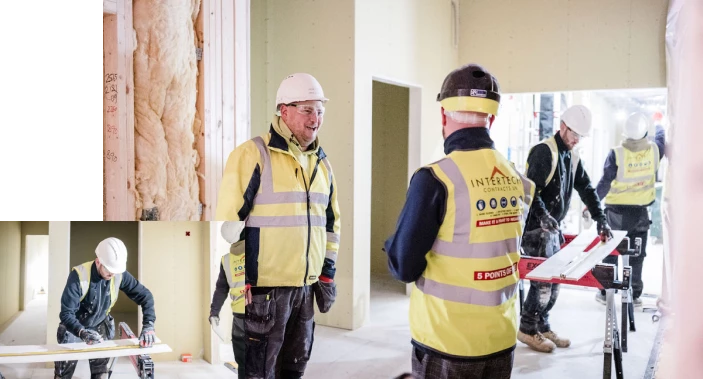
What are Modular Buildings?
Modular buildings are an innovative way in which the construction industry has been able to make quick, affordable, and robust buildings for several different industries. You can often recognise them at schools as newly installed classrooms, as they are a great way to inject extra space into an older buildings such as schools, hospitals or even construction sites. Modular buildings are portable and great for short term solutions such as creating warm, indoor office space for an admin at festivals, or long-term building projects. However, they can also be built with permanence in mind. New hotels in cities are battling with space and expense and have been able to use shipping container looking boxes, or modular buildings, to stack and fit together efficiently, with everything already built and decorated inside to create the hotel room. As everything is put together at the factory, it dramatically cuts down on construction time and expenses.
How are Modular Buildings Built?
The main function of a modular building is that it is light and efficiently built. You should be able to expect the creation of a modular building to take a fraction of the construction time as a brick-and-mortar structure which greatly increases their appeal. They are built in a factory environment with a production line, this efficiency reduces their costs as all the materials needed are supplied in exact amounts, reducing waste in both materials and time. They are then delivered to the site on the back of large haulage cranes, which can lift the modular building into place, and then it is the simple task of the construction workers to secure the buildings together with the appropriate tools and materials for maximum safety.
How are Modular Buildings decorated?
As modular buildings are built with weight in mind, they often forgo the process of plastering walls. The wall construction is the main difference in decorating between brick and mortar, permanent structures, and the potentially portable or short-term solution modular buildings. Some modular buildings use panelling rather than gypsum board, also known as drywall. Drylining allows a wall to be user-ready almost immediately and does not require a plaster finish. All that is needed then is tape and jointing to hide where the panels meet and finish off the walls to a high standard, allowing them to be painted any colour to finish off the décor of a room. The lack of plaster keeps the building light, but it also removes the risk of cracking the plaster whilst the building is being transported to its destination. Many companies that build modular buildings will offer a bespoke design service, meaning you can choose much of the decoration to suit your needs. This could be from bright colours for a primary school classroom, to appropriate built-in storage for a pop-up vaccination office.
Category: Commercial
